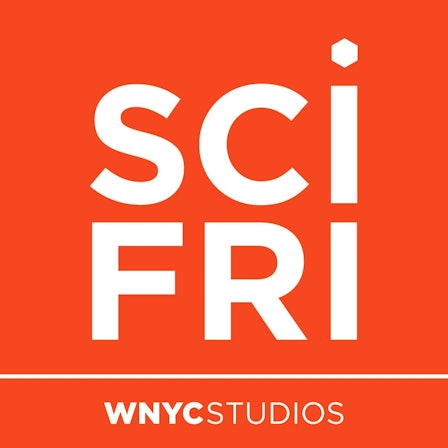
Covering the outer reaches of space to the tiniest microbes in our bodies, Science Friday is the source for entertaining and educational... more
Episodes
How will market uncertainty and a lack of federal support for climate efforts affect the future of clean energy in... more
With the help of cat owners, a new project investigates cats’ biology and aims to link some of their behaviors... more
With brain-implanted devices, people with paralysis have been able to command computers to “move” virtual objects and speak for them.
In “Connecting Dots: A Blind Life,” inventor Josh Miele recounts his life story and path to becoming an accessibility designer.
Are traffic engineering decisions based on evidence-based research? Not as much as you might think.
The Webb Space Telescope picked up traces of dimethyl sulfide on planet K2-18b. On Earth, the molecule comes from microbes... more
A cell animator and a museum designer tell us how they translate scientific findings into visual experiences.
Bringing back Southwest peach orchards won’t be easy, but researchers are on the lookout for remaining trees—and they need help.... more
Utterances like “um,” “wow” and “mm-hmm” aren’t just fillers—they keep conversations flowing. Also, new research suggests the artificial sweetener saccharin... more
Nominee Jared Isaacman prioritized a Mars mission in his confirmation hearings, raising questions about the fate of the Artemis lunar... more
We go inside the scientifically accurate ER world created for the TV show with one of its medical consultants.
The ISS is set to be decommissioned in 2030. Several companies are competing for NASA contracts to build commercial space... more
What happens when AI moves beyond convincing chatbots and custom image generators to something that matches—or outperforms—humans?
It’s not just in your stuffy head. Seasonal allergies are getting worse as pollen season gets longer and more intense.
Food allergies are on the rise. For kids with less severe peanut allergies, one potential treatment could be found in... more
The cuts hit multiple agencies, affecting work on HIV, gun violence prevention, vaccines, minority health research, and more.
Emergency response experts say that funding and staff cuts at the National Weather Service could mean less reliable weather forecast.... more
When the Chicago-size iceberg drifted away, scientists seized the opportunity to study the life and geologic formations hidden below.
Mental health information on social media can be both revelatory and misleading. How do clinicians and their patients make sense... more
Engineers take an in-depth look at why the Francis Scott Key Bridge in Baltimore collapsed and how to prevent future... more
The company has genetic data of 15 million people, which could be shared with a future buyer. Here’s how to... more
Certain words are overrepresented in text written by AI language models. A study investigates why such patterns develop. Also, the... more
TB kills more than a million people each year. Dr. Mireille Kamariza has spent her career developing better detection and... more
In a new book, author John Green traces how the disease has impacted culture, geography, and even fashion over the... more
Researchers built the largest 3D map of our universe yet. What they found supports the idea that dark energy could... more
After nine months aboard the International Space Station, astronauts Butch Wilmore and Suni Williams have finally landed back on Earth.... more
The framework of Adverse Childhood Experiences started with an unexpected finding over 30 years ago. How is our approach changing?... more
Former NIH director Dr. Harold Varmus speaks out about what recent budget cuts and policy changes could mean for science.
Fungal networks in the ground ferry crucial nutrients to plants. But how do brainless organisms form complex supply chain networks?... more
Layoffs at the agency, which releases weather forecasts and monitors extreme weather, could have serious implications. Also, funds for climate... more
Mathematician Dr. Steven Strogatz breaks down the history of the math concept and brings it full circle to recent science.
A new book explores how prehistoric plants and dinosaurs co-evolved, and puts the spotlight on often overlooked flora.
An international team of researchers used drones to study narwhals and learn more about their behavior. And, a total lunar... more
A new study of butterfly populations in the US shows a 22% decline among over 500 species in just 20... more
USAID has historically funded programs focused on disease eradication, maternal and child health, and healthcare infrastructure.
Scientists aren’t always encouraged to be politically active. But recent political interference by the Trump administration has many fired up.... more
Last year, 9,000 deceased donor kidneys were discarded due to storage and time limitations. A kidney “life support” machine could... more
A journalist traveled to five continents to learn about the afterlife of our trash, and why most “recyclable” plastic actually... more
A study finds that Peto’s Paradox, which states that larger animals are no more likely to get cancer than smaller... more
Changes limiting programs, grants, and even the nature of studies are already underway at the NIH, NSF, FDA, CDC, and... more
